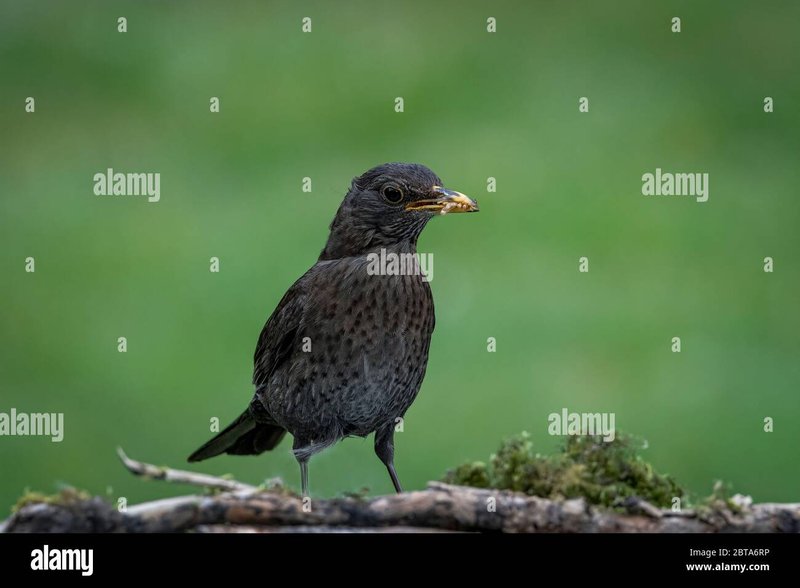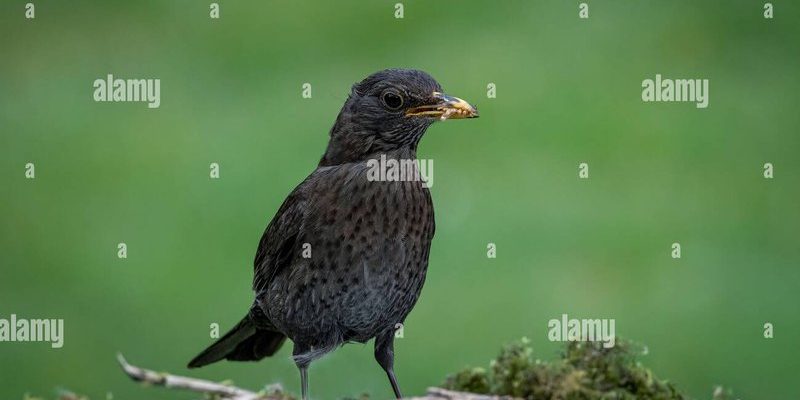
Inchworms, which are the larvae of moths in the Geometridae family, are typically found in trees and shrubs. Their name comes from their unique movement: they appear to “measure” the ground as they inch along, creating a loop with their bodies. Birds that prefer feeding on inchworms have keen hunting skills and often know just when and where to find them. Let’s take a closer look at some of these birds and why inchworms are such a delight in their diet.
1. American Robin
The American Robin is one of the most recognizable birds in North America, known for its bright orange belly and cheerful song. These birds love to feast on a variety of foods, but **inchworms** definitely make the menu during spring.
These robins have an excellent ability to spot movement on the ground, making them pros at hunting for inchworms, especially when the leaves start to unfurl. Inchworms are high in protein, which is crucial for robins, particularly as they are feeding their young. It’s not uncommon to see a robin hopping around under a tree, eagerly searching for these tasty treats.
Here’s the thing: robins don’t just eat inchworms. They enjoy a mix of **earthworms**, fruits, and insects. However, when inchworm season hits, you can bet they’re out there scouting for these little green gems.
2. Black-capped Chickadee
The Black-capped Chickadee is a tiny bird full of personality. With its distinctive “chick-a-dee-dee-dee” call, it’s hard to miss. These birds often flit around in trees, and they have an adventurous palate that includes **inchworms**.
Chickadees are agile and curious, which helps them find inchworms hiding among leaves and branches. They’ll often hang upside down to get a better look, showing off their acrobatic skills. Inchworms provide the protein and energy needed for chickadees, especially in the winter when other food sources are scarce.
You might notice them pausing mid-flight, with a twig or an inchworm dangling from their beaks, before they whisk back to their nests. It’s a vital part of their foraging strategy. Not only are they feeding themselves, but they’re also preparing for future flights!
3. Eastern Bluebird
The Eastern Bluebird, with its stunning blue plumage, is another bird that loves inchworms. These birds are well known for their bright colors and melodic songs. When they’re on the hunt for food, inchworms are high on their list.
Bluebirds typically forage from perches, scanning the ground for movement. When they spot an inchworm, they swoop down with incredible speed. Inchworms provide a nice mix of nutrients that help bluebirds build up energy, particularly during the breeding season when they need to feed their chicks.
It’s fascinating to watch bluebirds in action. They have a unique hunting style, hovering briefly before darting down to capture their prey. You can almost hear the excitement in their chirps as they find their next meal!
4. Warblers
Warblers are a group of small, colorful birds, and many species have a keen appetite for inchworms. One standout is the Yellow Warbler. These birds are often seen flitting through trees, constantly on the lookout for tasty insects, including inchworms.
Warblers are known for their energetic behavior and striking colors, making them a joy to watch. They often feed in pairs during nesting season and can consume a staggering number of inchworms. In fact, a single warbler might eat hundreds in a day!
Here’s the thing: inchworms aren’t just a snack; they’re essential for the survival of young warblers. Mama warblers work hard to catch them and bring them back to the nest. It’s a constant hustle, and the parents are dedicated to ensuring their chicks have the best start in life.
5. House Wren
House Wrens are charming little birds often found in gardens and wooded areas. They have a curious and energetic nature, making them lively entertainers. One of their favorite foods? You guessed it—**inchworms**!
These wrens are insectivorous, meaning they thrive on a diet primarily composed of insects. Inchworms serve as a nutritious option, especially when they’re rearing their young. Wrens are known for being industrious and will search through nooks and crannies to find these treats.
Watching a house wren hunt for inchworms is a delightful experience. They’ll hop excitedly among branches, listening intently for the slightest rustle that might lead to a meal. Their determination and energy are truly inspiring!
6. Yellow-billed Cuckoo
The Yellow-billed Cuckoo is a bit shyer than other birds, but it loves to chow down on **inchworms**. These birds are more elusive and often prefer dense foliage where they can find insects without being disturbed.
Cuckoos have a unique hunting style. They will quietly search through leaves, often consuming large quantities of inchworms during peak feeding times. These birds are known for their distinct call and curious behavior. You might spot one perched high in a tree, scanning the area for food.
What makes cuckoos interesting is their reliance on inchworms during the summer months. As other food becomes available, inchworms remain a staple in their diet, helping them thrive in various habitats.
7. Tufted Titmouse
The Tufted Titmouse is another bird that enjoys a diet rich in **inchworms**. With its charming crest and friendly demeanor, this little bird is often found flitting about in backyards and wooded areas.
Titmice are agile and curious foragers. They’ll search for inchworms among tree branches, often hanging upside down in their quest. Inchworms provide much-needed protein, especially during the breeding season when titmice are busy feeding their chicks.
If you have a feeder in your yard, you might catch a glimpse of these feathered friends searching for inchworms and other insects. Their energy and charm make them delightful to watch as they go about their day.
So, there you have it! A closer look at some bird species that have a taste for inchworms. From the cheerful American Robin to the curious Tufted Titmouse, these birds play a significant role in the ecosystem by controlling insect populations and ensuring their survival.
Next time you see a bird hopping around your garden or perched high in a tree, remember that they might just be on the hunt for a delicious inchworm meal. It’s amazing how these tiny caterpillars can support so many different species, isn’t it? With their delicate movements and nutritious value, inchworms are more than just garden nuisances—they’re a vital part of the food chain that feeds these beautiful birds. Keep your eyes open, and you might catch a glimpse of one of these feathered friends in action!

